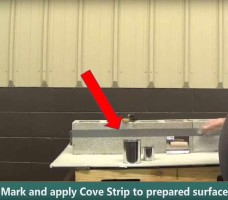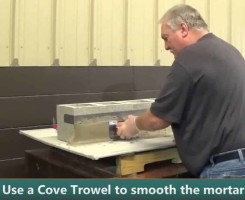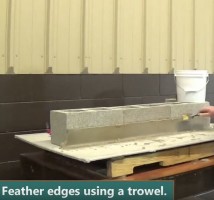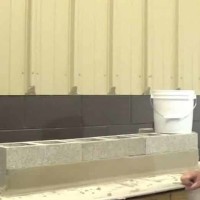NP1 Cove Master Vertical Epoxy Mortar | 100% Solids | High Build | 5 Colors
NP1 is a three component 100% solids epoxy mortar designed for vertical cove base surface applications. The NP-1 has specially selected aggregate and ingredients to provide easy construction of cove bases with the use of a marginal trowel or other cove base application tools.
Complete your epoxy floor project with a great looking vertical cove epoxy using the NP-1 in one of 5 colors.
Available in 5 color options. Each kit has Part A, Part B and aggregate Part C. Below are options:
.25 cu ft (32.5 lb) kit which covers 36 linear feet at 4″ high (includes 26.5 lbs of two blends: 40-100 mesh and 8 lbs 40-60 mesh kiln dried silica sand)
.125 cubic ft (16 lb) kit which covers 18 linear feet at 4″ high
Sample size kit 3 lbs.
Also available in liquid only option in 1 gallon and 3 gallon 2 part kits. Liquid only options can be used as a primer.
Application thickness depends on project requirements. Apply the NP-1 at minimum 1/8″ thickness.
PRIMER: None required. Suggest using NP1 liquid only option as primer (NP-1DG1 or NP-1DG3) comes in 1 gallon and 3 gallon kits and then apply NP1 with aggregate when tacky for best adhesion.
TOPCOAT: None required
NP1 Vertical Cove Epoxy Used?
- Any vertical wall surface requiring a Cove finish
Why NP1 Cover Master Epoxy?
- Easy construction of vertical cove bases
- 100% Solids Commercial Grade Epoxy
- High build formula
- 5 color options
- Comes as 3 part kit with aggregate or Liquid Only to add your own aggregate or NP1 can also be used as a primer


























